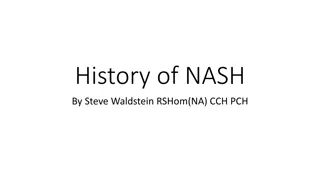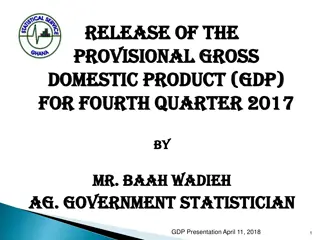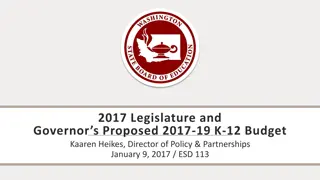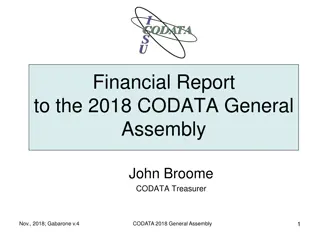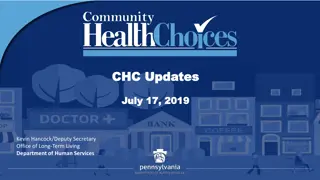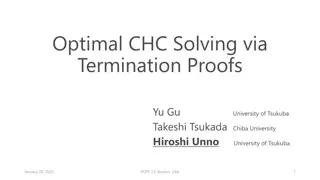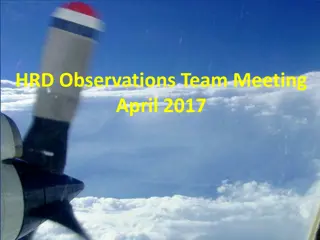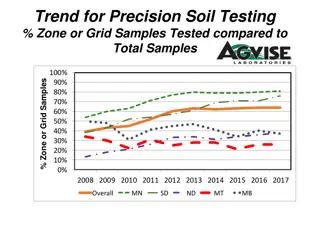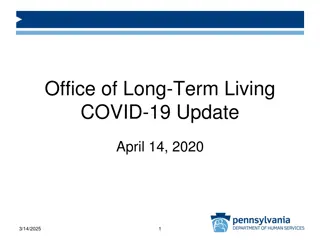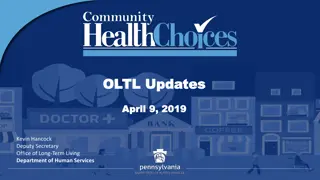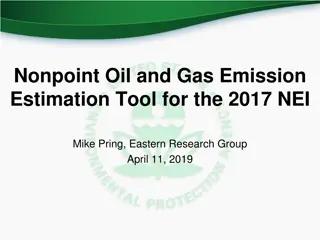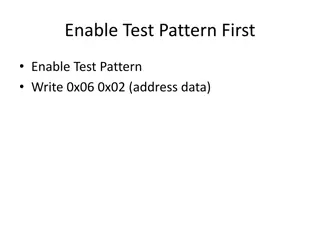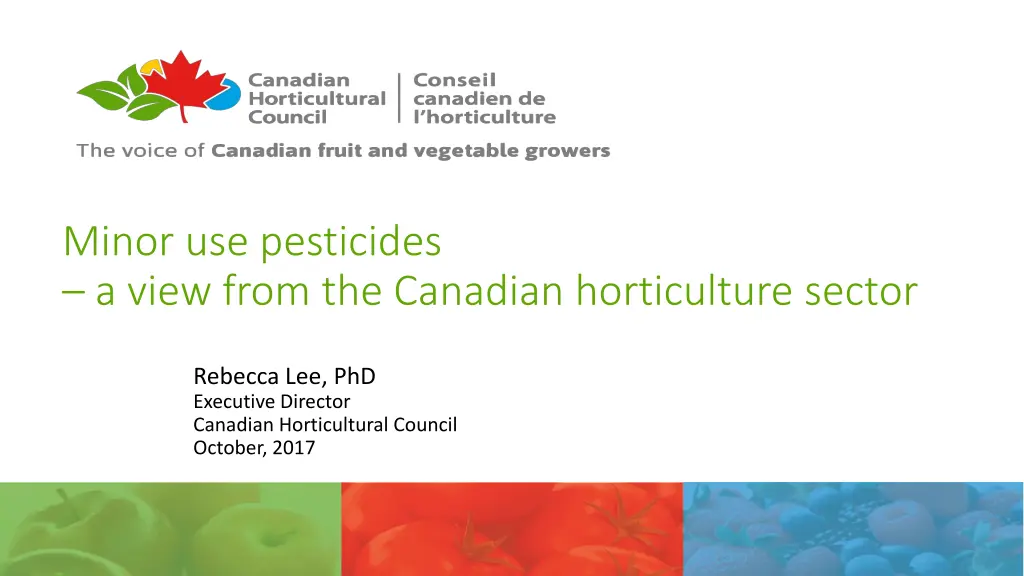
Insights into Minor Use Pesticides in Canadian Horticulture Sector
Explore the benefits and challenges of using minor use pesticides in the Canadian horticulture industry, as discussed by Rebecca Lee, Ph.D., Executive Director of the Canadian Horticultural Council. Discover how dedicated programs and initiatives support growers in managing emerging pest issues, navigating export/trade regulations, and engaging with legislators for favorable outcomes. Gain valuable insights into the role of the Canadian Horticultural Council in advocating for over 22,000 growers across various commodities, promoting sustainable practices, and ensuring effective pest management strategies.
Download Presentation

Please find below an Image/Link to download the presentation.
The content on the website is provided AS IS for your information and personal use only. It may not be sold, licensed, or shared on other websites without obtaining consent from the author. If you encounter any issues during the download, it is possible that the publisher has removed the file from their server.
You are allowed to download the files provided on this website for personal or commercial use, subject to the condition that they are used lawfully. All files are the property of their respective owners.
The content on the website is provided AS IS for your information and personal use only. It may not be sold, licensed, or shared on other websites without obtaining consent from the author.
E N D
Presentation Transcript
Minor use pesticides a view from the Canadian horticulture sector Rebecca Lee, PhD Executive Director Canadian Horticultural Council October, 2017
Contents Overview of CHC Benefits and the use of dedicated minor use/assistance programs Managing emerging pest issues Export/trade and chemical review issues Degree of engagement with dedicated minor use programs and legislators to support outcomes for minor use Factors that could facilitate grower outcomes and support into the future
Who we are National non-profit advocacy group Based in Ottawa Governed by a Board of Directors 10 staff We are the voice of Canadian fruit and vegetable growers
Who we represent Over 22,000 growers Over 130 member organizations Over 120 different commodities Members are in Canada and beyond
What we do Advocate for members on key issues Facilitate government consultations Coordinate research projects and funding
How we are organised Core areas Labour Trade and marketing Industry standards and food safety Finance and business management Crop, plant protection and the environment Commodity groups Apple & tree fruit Potato Greenhouse vegetables Berries Field vegetables
Benefits and the use of dedicated minor use/assistance programs AAFC s Pest Management Centre (PMC) and Pesticide Reduced Risk Program (PRRP) impact on minor use (MU) crops in Canada has been very positive. From: few pesticides registered + many emergency registrations / year To: growers now have registered pesticides for most of our priority pests and diseases + the need for emergency registrations is greatly reduced.
Benefits and the use of dedicated minor use/assistance programs (cont.) Almost universal dependence on PMC to generate residue and efficacy data for MU food crops and Dislodgeable Foliar Residue (DFR) data for MU non-food crops. PMC was never intended or budgeted to do DFR work. This is an on-going concern. Benefit of the PMC is to have dedicated, reliable funding and staff for on-going MU registrations instead of the ad hoc system that was in place previously. Benefit of the PMC system is that it is transparent and that the growers are the ones who get to pick the projects through the provincial MU coordinators grower meetings and by the growers that attend the Ottawa meeting.
Managing emerging pest issues AAFC s PMC, provincial ministries of agriculture and grower groups e.g. CHC are engaged in research and finding solutions for emerging pest issues such as Spotted Wing Drosophila (SWD) and Brown Marmorated Stink Bug (BMSB). PRRP is engaged in work to address priority pests and diseases e.g. Downy Mildew GH Cucumber working group (ask Niki Bennett, OGVG for details). Grower associations engaged in finding solutions to new and emerging economic pests, e.g. OGVG and pepper weevil on GH peppers
Managing emerging pest issues - challenges Challenge: The time lag between when a new pest strikes and when control products can be registered. Government agencies can be slow to respond and the growers pay the price waiting for emergency registrations and/or full registrations (egg, SWD, BMSB, pepper weevil). Our national programs on plant quarantine are not responsive enough in a timely way. Resistance management remains a challenge and the continued registration of products in different FRAC, HRAC and IRAC remains a priority. Challenge: Discontinuing pesticide registrations when no viable or efficacious alternatives are in place e.g. imidacloprid can leave large gaps in growers IPM toolboxes Challenge: Discontinuing broad spectrum pesticides resulting in secondary pest becoming serious pest problems e.g. imidacloprid used to control aphids and whiteflies also controlled Lygus and stink bugs. If imidacloprid is lost the secondary pest may become a major issue. Challenge: Can the regulatory system respond fast enough when a quarantine pest is found? What mechanisms are in place for CFIA and the PMRA to coordinate to address quarantine pest issues.
Export/trade and chemical review issues Challenge: Harmonization with our major trading partner the US is still an ongoing challenge. The many joint Canada-US (PMC-IR4) minor use projects are helping to address this issue. Global MU projects are the next step where same time registrations and same MRLs in OECD countries will help Canadian farmers who are seeking new export markets. Challenge: More resources are needed for CFIA to address phytosanitary barriers to trade through bilateral agreements so Canadian farmers can gain access to new markets and to resolve unexpected barriers in existing markets e.g. approximately 20 years to gain access to Japanese market for BC greenhouse peppers due to concerns about TBM. Challenge: PMRA still working on DFR database for greenhouse food and non-food crops ideally DFR data on any greenhouse crop could be used interchangeably. Status of harmonizing with the EPA? (This is a burgeoning problem with re-evaluations too.). Can lead to different registration decisions between the two countries (CDN/US). Will Canada move from risk based assessments to hazard based assessments which Europe did? If yes, then we might be losing many important pesticides. What will replace these pesticides? Will we go back to a situation where many EUR will need to be requested every year?
Degree of engagement with dedicated minor use programs and legislators to support outcomes for minor use Growers and grower associations are fully engaged with the PMUCs, PMC s MU workshops. CHC CPAC meets at least once yearly with top PMC and PMRA staff to discuss issues of concern to the growers around pesticide registrations. CHC and individual grower groups respond to PMRA proposed registration/re-evaluation decision consultations. CHC educating politicians about issues of importance to agriculture - Fall Harvest
Factors that could facilitate grower outcomes and support into the future Biopesticides will play a larger role than they currently do at least for protected crop culture. Will there be research and extension support to help growers determine how to best use the biopesticides as part of an overall IPM program? With increased trade there will be more new and invasive pests and diseases. Do agencies such as the CFIA (NPPO) have the resources to minimize such events from happening? Can government agency response times be improved so that growers can get the tools to manage these diseases and pests in a timely way when an incursion happens? If we move from a risk-based to a hazard based model what government supports will be in place if many pesticide registrations are discontinued/phased out? Will there be a transition period to allow alternatives to be put in place or will we go back to a situation where many EURs are submitted every year?
Barriers to accessing crop protection products Canadian registrations without export MRLs Rovral, Dynomite and Vendex Investment too great for registrants Cyflufenamif, triflumizole PMRA is not the EPA Occupation exposure data (DFR) Value and efficacy data
rlee@hortcouncil.ca CHC AGM March 13-15, 2018 Ottawa www.hortcouncil.ca @CHC_CCH



